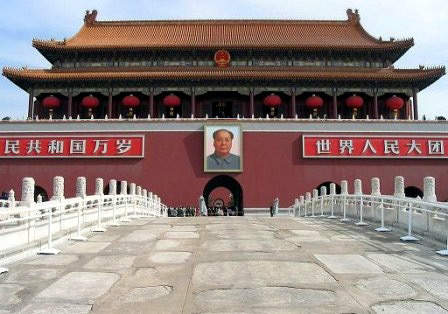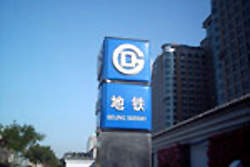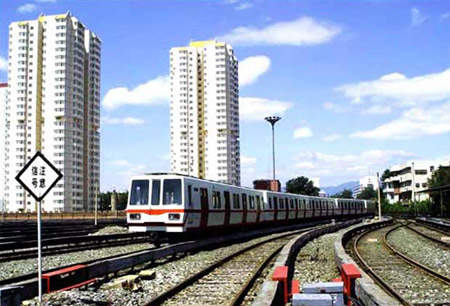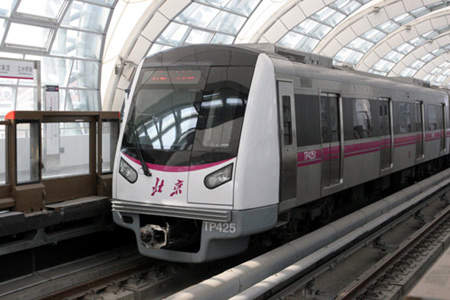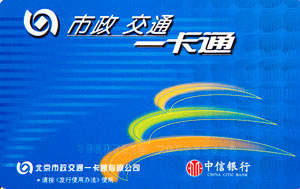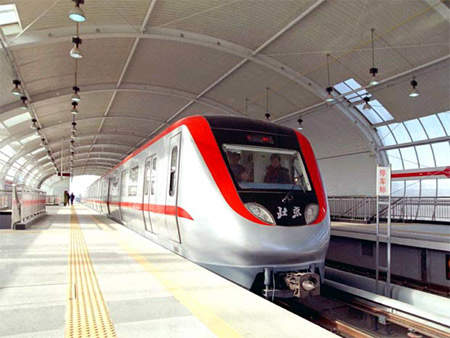Beijing’s metro was approved in 1965 and had a first line of 24km, primarily motivated by military considerations. It was the first line in China and opened on 1 October 1969. A late starter with rapid transit for a major city, local provision was out of step with the capital’s standing as the largest concentration in the national rail network.
Branded in the English language branding as the Beijing Subway, the system underwent a spectacular expansion that included the notable stimulus of the city hosting the 2008 Olympic Games.
Currently exceeded in length by the metro in Shanghai, China’s largest city and premier cultural and economic force, the Beijing Subway is an evolving project that will make it the longest in the country. It also seems destined to surpass the other giant systems such as London, New York, Moscow and Tokyo.
The average ridership on the subway is 9.75 million. A record ridership of more than 11.05 million passengers was recorded in July 2013.
The evolution and need for Beijing’s metro network
With more than 7.5 million people in the city proper and estimates of at least 17 million present in the conurbation, Beijing is undergoing rapid growth. This includes car registrations which are increasing by more than 15% each year, contrasting with road space being increased by 3% annually.
In 2004 the China Academy of Railway Sciences identified that Beijing scored very low (4.7%) in terms of the percentage of urban journeys being made by rapid transit, well below the levels of Hong Kong, Moscow (both 55%) or Paris (66%).
Even in Tokyo, where car ownership was high compared to Beijing, the quality and coverage of public transport in the Japanese capital meant urban rail systems enjoyed high patronage by commuters.
The problems of pollution from industry and traffic were well documented prior to the Olympics, prompting extreme official measures to reduce risk levels. The apparent success of these measures, plus the Games-related increase in public transport capacity, appears to have strengthened the case for maintaining the commitment to rail expansion, even if has not been well received by the growing car-owning classes.
Beijing city authorities also support rail expansion to cut the currently long travel-to-work times and as a stimulus for businesses to disperse from the centre to new sites in the suburbs.
Funding for system expansion is thought to be 40% from municipal authority budgets approximating to $1.5bn annually, the remainder coming from commercial loans.
The ¥4tr ($45.2bn) economic package released by the Chinese Government also boosted the construction of the project.
Prior to the start of preparing for the Olympics, Beijing Subway had expanded to four lines with 1.5 million daily passenger journeys. A key link from central Beijing to Olympic venues in the north of the city opened in October 2007. The 27.6km Line 5 was the first on the network on a north-south axis and was opened in 2007.
In the Olympic year itself, three new urban lines with 30 additional stations costing $3.2bn opened. On the Subway, Line 10 at 25km (15.5 miles), plus the 4.5km spur to the principal site and the ‘Olympic Line’ (during the Games reserved for competitors, officials and event ticket holders).
Line 10, which opened in 2008, has been substantially extended by an additional 32.5km stretch to create an outer loop. The third 2008 opening was the free-standing premium-priced 28km (17.4 mile) Airport Express.
On 28 September 2009, Line 4 of the subway became operational. Line 4 runs from north to south parallel to Line 5. It is 28.2km in length and connects 24 stations. Line 15, Changping, Fangshan and Daxing, became operational in December 2010. Work on the Yizhuang Line (Line L2), which extends 23km (14.3 miles) from the southern terminus of Line 5, began on 8 December 2007, becoming operational in December 2010.
Construction of the North Section under phase II of Line 8, South Section of Line 9, Section 2 under phase I of Line 15, and Fangshan Line began in December 2007, April 2007 and April 2009 respectively.
The construction of Line 9 North Section and Line 10 phase II began in April 2007 and completed in October 2012.
The Line 8 phase II North Extension, South Section and Line 6 phase I opened for public service in December 2012.
The construction of phases I and II of Line 14 started in April 2010. Phase I of Line 14, connecting the Zhangguozhuang in the South West of the city to Xiju on the Western part of Line 10, was opened in May 2013. Line 14 is operated by MTR Corporation.
A total of 17 lines (Lines 1, 2, 4, 5, 6, 8, 9, 10, 13, 14, 15, Batong, Changping, Daxing, Fangshan, Yizhuang and Airport Express), 227 stations and 456km of track in the Beijing Subway network were operational by 2013. The network reached its 456km stretch by May 2013.
Infrastructure of the Chinese capital’s rapid transit system
Beijing Subway uses a 1,435mm gauge with 750V dc third rail electrification with surface and underground running. The time span of system development is reflected in the styles, layouts and many types of rolling stock.
Within the stations, the Subway authority believes there is inadequate provision for commercial activity and expects to provide more opportunities for small enterprises such as convenience stores.
To reach the international airport to the north-east of the city centre, a different rail format was adopted for the new line that terminates at the Dongzhimen Subway interchange. With more widely spaced stops and a 110km/h maximum in contrast to the Subway’s 80km/h maximum, there is a journey time of around 16 minutes.
Rolling stock used on the proposed longest metro in China
Unlike the Shanghai Metro, which sourced rolling stock from overseas suppliers such as Bombardier, Siemens and Alstom, the Beijing Subway has favoured domestic producers. There is a wide range of classes, some earlier batches having been subject to severe reliability and build quality problems. With the introduction of the newest lines, train capacities have increased to more than 1,400, up 340 over previous formations.
Signalling and communications and evolving ticket systems
With education and instruction measures in place to smooth the transition, Beijing has replaced a paper ticket-based system with automatic fare collection through barriers activated by magnetic strip tickets or passes. Chinese characters and announcements are supplemented by information in English.
By August 2008 it was claimed that all 123 stations had at least one access point available to wheelchair users.
Hollysys Automation Technologies received a $48m contract from Beijing Mass Transit Railway Operation Corporation in November 2009 to install signalling systems and render engineering, procurement and construction (EPC) services for the Changping Line of Beijing Subway network.
Hollysys was again contracted in July 2010 to deliver advance SCADA software system for the second phase of the Beijing Subway Line 8 extension at a cost of $11m. The system interlinks various automation subsystems at station level.
A €65m ($90m) contract was awarded to Siemens Mobility and China National Railway Signal & Communication Corporation in October 2010 to provide Trainguard MT automatic train control system for the Olympic Line 8 and Ring Line 10 of the network. Siemens will also install operations control centre, interlocking and onboard components for 82 trains.
Beijing Traffic Control Technology Company and Wind River collaborated in June 2011 to build and install a communication based train control (CBTC) system on the Yizhuang and Changping lines of the Beijing Subway network.
The future for the Beijing Subway
Beijing Subway is planning to have 19 lines totalling 708km (440mi) of track in operation by 2015, and 1,050 km (650mi) of track by 2020, with an expected nine million passenger journeys a day.
The Line 7 and Line 15 phase I Section 3 are expected to be commissioned by early 2014.

